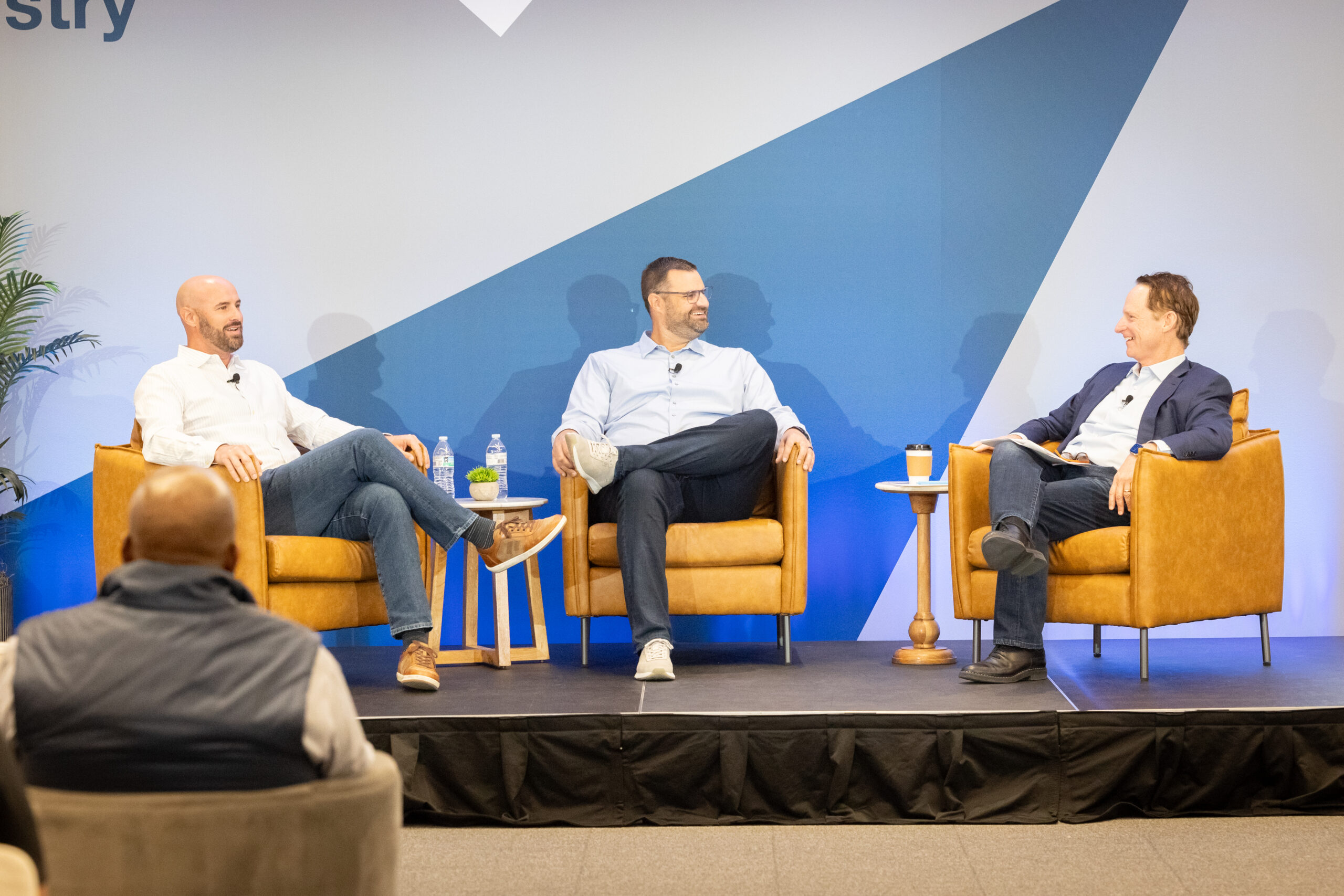

Planning 5 for 50…and Beyond
- Heath Barnes
- Mercer Landmark
Mercer Landmark is a cooperative (coop) deeply rooted in agriculture and community. We serve agricultural producers of everything from grain to feed to agronomy services and energy in Ohio. When I stepped in as CEO five years ago, the company was 90 years old. It was started by a group of agricultural producers back in the 1930s. Our cooperative had seen financial success, but I quickly realized that we needed a significant transformation to ensure our longevity for the next 90 years.
The fundamental, underlying issue that I found when I came in the door was an incredibly decentralized business model. We had five distinct business units, but they operated independently, with little to no collaboration. Worse, we had locations within the same business unit that were competing against each other. The root of the issue lay in the managers’ incentives, which were solely tied to the bottom line. Unfortunately, this had led to a culture of minimal investment in our facilities, as managers prioritized short-term bonuses over long-term sustainability. While Mercer had been financially successful up to that time, we were not thinking about tomorrow; it was all about today.
I thought to myself, it’s great that we’re successful, but looking out ten years from now is scary. How are we going to survive as a company, because in 10 years the market’s going to change and we’re still going to be operating like we were 25 years ago? Guided by this concern and this mindset, we embarked on our journey of what we now call our “5 for 50” strategy.
In essence, the 5 for 50 strategy emphasizes a long-term, Evergreen® mindset and thinking that we needed to adopt to ensure our survival through the next century. It governs our planning strategy and reminds us that even as we plan for just the next five years, we have to see them as a runway to the next fifty. But how did we translate this theoretical framework into actionable change? For starters, we had to tackle the decentralized structure. We needed a cohesive organization where everyone worked toward a common goal. We also had to evaluate our current assets and determine what we would require in the future. Capital allocation became a critical aspect of our planning. However, the most significant transformation was in our company culture. We knew that we needed to shape and change our culture from where it had resided for a long time. We had to clarify what we wanted our culture to be. Then, we had to decide how we would convey that effectively to our employee base and our customer base, to ensure that they bought into it as well.
To guide us through this transformation and ensure its longevity, we established a framework of four pillars, intended to guide us into our future. Our four pillars are: Innovate, Grow, Develop, and Perform. They have allowed us to take our abstract ambitions and turn them into tangible changes.
Innovation is critical to any organization that wants to exist for the long term. The world changes fast and you have to be prepared to change with it. Agriculture has been a bit of a laggard in technological advancement over the years, so we’ve put a lot of emphasis on creating a culture of innovation. We know the best innovation doesn’t come from the top down; the people on the front lines are usually the ones that come up with the best ideas, so we embrace a culture of open collaboration. Our team is learning that if you have a good idea, bring it to us! You can be sure we reward those good ideas. We believe that infusing innovation into our business processes and technology is crucial for enhancing customer experiences as well as our customers’ ROI. This, in turn, means we are more successful as a company, so it benefits everyone involved, right back to the employees who generated the good ideas in the first place.
The pillar of Grow is clear; of course we aim for ongoing, Paced Growth in our organization. But it’s about more than just growing the company. At the same time, we want to keep maturing, becoming more sophisticated, and continuously improving across the organization. We have invested heavily in this pillar. We’ve gone so far as to create a new position to oversee this work, the Director of Organizational Development. We call him the DOOD. We have some fun with that, but we take this pillar very seriously. We have embraced organizational health, which couples our Grow pillar and our Develop pillar together. Pat Lencioni’s book The Advantage has been a huge component of this work; we view organizational health as our advantage. This is unique for the agricultural space, and it is what we feel sets us apart from our competition.
The next pillar, Develop, is about providing support and opportunities for our team members. In agriculture perhaps more than many industries, it’s been the norm for a long time to bring a new person into the organization for a frontline role, for example, without ever thinking about what that career path might look like. There was nothing in place to show people that they can evolve within the organization. As a concrete step toward improving this, we’ve created what we call our Ambition in Action (AIA) group; every year we have a class of emerging leaders that we send through a seven-month management training program. We break them into groups, and they do a project within our organization, which we try to make as immersive as possible. Many of these people are frontline workers or new in a management role. It’s been incredible, because now, suddenly, these people have embraced the full culture we’ve been working to create. We started the AIA about three years ago and most of the people from our first class are now in bigger roles within our organization. Creating those career paths and showing people that it’s not just about being a mill operator, or a driver forever has been powerful and empowering for our team.
Our final pillar is Perform. Perform centers on measurement and management. We realized that if we couldn’t measure something, we couldn’t effectively manage it. Over many years we had accumulated a ton of data, but we couldn’t get our hands around it. We couldn’t visualize it or manage it, so it was not useful to us. As a result, we were very reactive in the way we responded to new revelations. Over the last five years, as part of the Perform initiative, we’ve tried to get more proactive around Key Performance Indicators (KPI) and live data. This work has dovetailed nicely with our Innovate pillar; we have embraced and implemented a ton of new technology throughout the business. We’ve implemented methods like Power BI, which helps us drive accountability. We now have something that allows us to measure performance, from managers to salespeople, and even truck drivers and field spray applicators. That’s been an exciting component of shifting how people think about their work at Mercer.
Like in any organization, change is hard. A lot of our customers have multi-generational operations, so they may have two, sometimes three generations in the businesses. People get entrenched. The changes that we have been working on over the past five years have been challenging, not just for our team, but for our customers. In addition to getting clarity on our vision for the future and articulating it clearly through the four pillars, a lot of the work has been in getting the message out to all our stakeholders. We talk about the four pillars in every meeting, anchoring them deep within our organization’s culture. They are fundamental to our decision-making process at every level. In fact, we repeat them over and over so often that we get sick of hearing ourselves talk about them! But this redundancy is purposeful, and necessary to drive the culture deep into the organization and ensure everyone is on board.
Five years in, the work is not finished (it never is), but we have made a significant shift toward being a truly Evergreen company, in position to last another 90 years. We plan for the next five years, all while keeping an eye on the next 50 and beyond.
More Articles and Videos

Fireside Chat with Dave Thrasher, Dan Thrasher, and Dave Whorton
- Dave Thrasher, Dan Thrasher, & Dave Whorton
- Supportworks and Thrasher Group

Get Evergreen insight and wisdom delivered to your inbox every week
By signing up, you understand and agree that we will store, process and manage your personal information according to our Privacy Policy






